10 Mythical animals they actually existed in real life
Werewolf are true
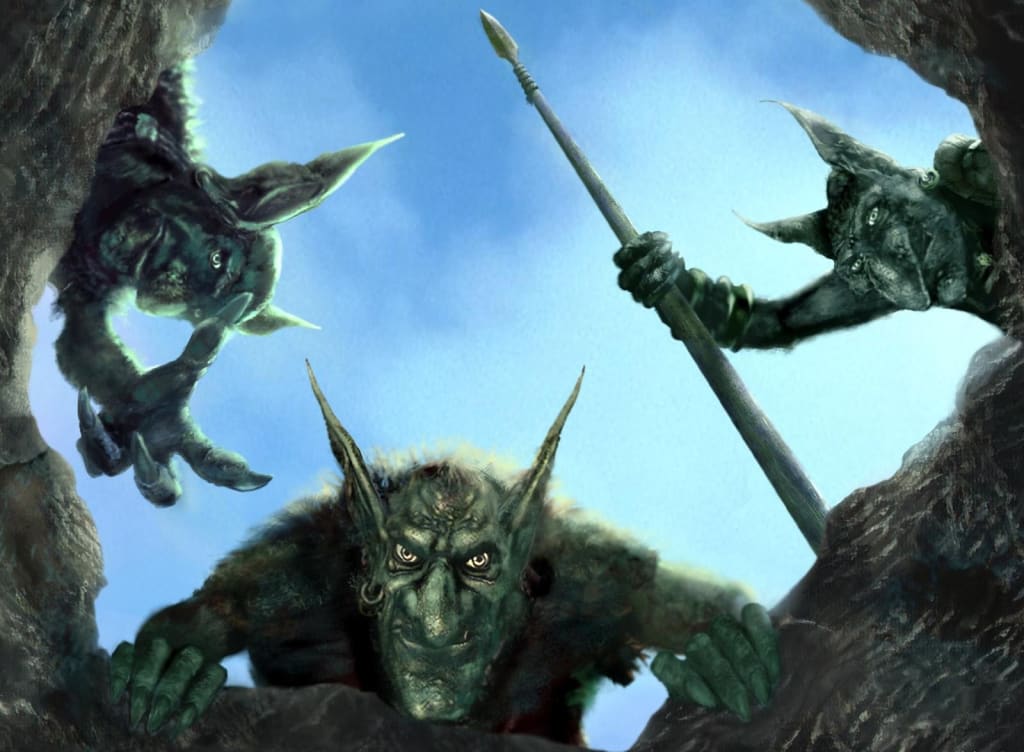
Mythical creatures are creatures that are found in legends, myths, and folklore, but do not exist in the natural world. These creatures are often imbued with supernatural powers and abilities, and are often used to explain natural phenomena or to serve as symbols for human traits and emotions.
Mythical creatures have been a part of human culture for thousands of years, and have been featured in art, literature, and religious texts from around the world. They continue to capture the imaginations of people today, and are often used in popular culture, such as movies, video games, and other forms of entertainment.
While mythical creatures are not real, they are an important part of human culture and have played a significant role in shaping the way we view the world and our place in it. They continue to inspire and captivate people of all ages, and are likely to remain an enduring part of human storytelling and imagination for centuries to come. Here we going to see 10 mythical creatures
1., Direwolves:

Direwolves are a fictional species of large wolves that appear in the popular book series "A Song of Ice and Fire" by George R. R. Martin and the subsequent television series "Game of Thrones". In the series, direwolves are portrayed as being larger and more aggressive than normal wolves, with distinctive features such as their white fur and red eyes.
In the story, direwolves are native to the northern regions of Westeros, and are considered a rare and endangered species. However, when a litter of six direwolf pups is discovered near the Stark family's ancestral home of Winterfell, it is seen as a sign of great importance, and each of the Stark children is given a direwolf pup to raise as their own.
As the story progresses, the direwolves become important companions and protectors to the Stark children, with each wolf developing a unique bond with its human counterpart. The direwolves are also heavily symbolic in the series, representing the Stark family's connection to the harsh northern wilderness and their fierce loyalty to one another.
Throughout the series, direwolves play a significant role in both the plot and the character development of the Stark family. While the direwolves are formidable creatures, they are also vulnerable to danger and ultimately become a tragic symbol of the harsh realities of the world of Westeros.
Overall, the direwolves in "A Song of Ice and Fire" and "Game of Thrones" are a powerful and evocative representation of the wild, untamed nature of the North, and the deep bond between humans and animals.
2., Griffin:
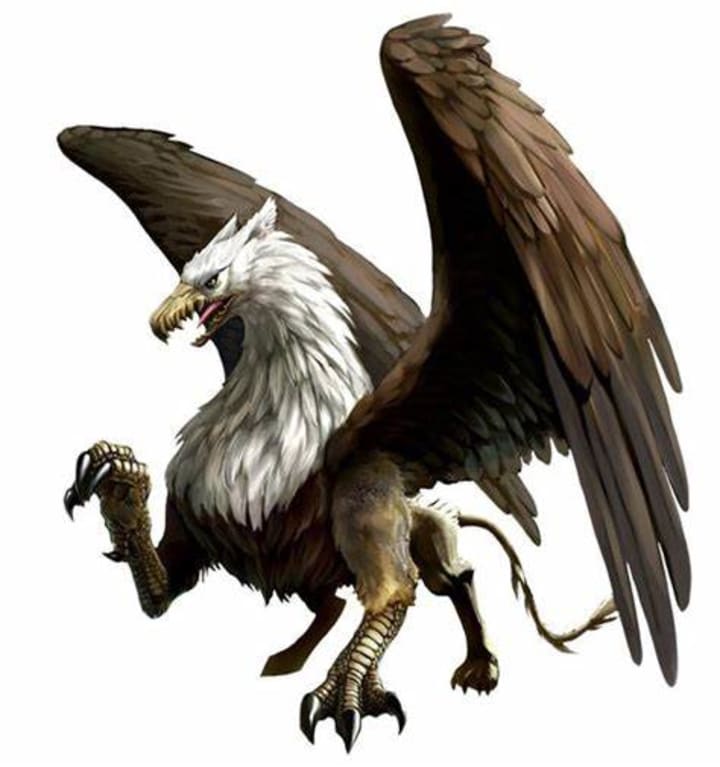
The griffin, also spelled as "gryphon" or "griffon," is a legendary creature with the body of a lion and the head and wings of an eagle. The origins of the griffin can be traced back to ancient Middle Eastern mythology, where it was considered a protector of treasure and a guardian of the divine.
The griffin was also a popular motif in ancient Greek art and literature, appearing in stories such as the myth of the Golden Fleece and in depictions on ancient Greek pottery. It was often portrayed as a fierce and noble creature, with the ability to fly high in the sky and swoop down to attack its prey with its sharp talons.
As the centuries passed, the griffin remained a popular symbol in European heraldry and art. It was frequently used on coats of arms and as a decorative element in architecture, representing strength, courage, and nobility. In medieval Europe, the griffin was often associated with the divine, and was considered a guardian of the gates of heaven.
During the Renaissance, the griffin continued to be a popular motif in art and literature, with many artists creating elaborate paintings and sculptures featuring the creature. The griffin also played a prominent role in medieval bestiaries, which were compendiums of descriptions of animals, both real and imaginary.
Today, the griffin remains a popular symbol in popular culture, appearing in books, movies, and video games. It is often portrayed as a powerful and mystical creature, imbued with a sense of wonder and magic. The griffin's long and rich history has ensured that it remains a beloved and enduring symbol of myth and legend.
3., Dobharchu:
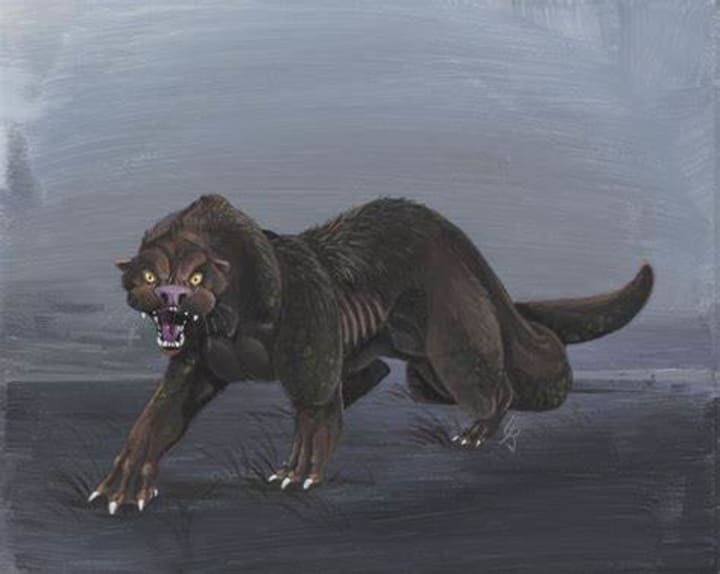
Dobharchu, also known as the Irish otterhound, is a large dog breed that is native to Ireland. The name "dobharchu" comes from the Irish language, where "dobhar" means water and "cu" means hound.
The dobharchu was historically used as a hunting dog for otters, which were a valuable source of food and fur. Otters were abundant in Ireland's rivers and coastal areas, and the dobharchu was specially bred to be a skilled swimmer and hunter.
The dobharchu was also known for its strength and endurance, which made it well-suited for hunting in rough terrain and harsh weather conditions. Its thick, waterproof coat protected it from the cold and damp, and its webbed feet and powerful tail made it an excellent swimmer.
The dobharchu was highly valued by Irish hunters, and its image is featured in ancient Irish mythology and folklore. In Irish legend, the dobharchu was said to be a fearsome creature with the ability to change its shape and size at will. It was also believed to have magical powers and was often associated with the goddess of the hunt, Mórrígan.
Despite its popularity as a hunting dog, the dobharchu's numbers began to decline in the 19th century due to changes in hunting practices and the introduction of other dog breeds. By the early 20th century, the breed was nearly extinct.
Efforts to revive the dobharchu began in the 1970s, and a small population of the breed was established in Ireland and the United States. Today, the dobharchu remains a rare breed, but dedicated breeders are working to ensure its survival and promote its unique qualities as a hunting and companion dog.
4., Nine-tailed fox:

The nine-tailed fox is a mythical creature found in East Asian folklore, particularly in Chinese, Korean, and Japanese mythology. It is also known as the kitsune in Japan, the gumiho in Korea, and the jiuweihu in China.
The nine-tailed fox is a fox spirit that is said to possess nine tails, each representing a different power or ability. In some legends, it is said to have the power to shape-shift into human form and to have supernatural powers such as the ability to control fire and lightning.
The origins of the nine-tailed fox myth are unclear, but it is believed to have originated in ancient China. It was later adopted by Korean and Japanese cultures, where it became a popular subject of art and literature.
In Chinese mythology, the nine-tailed fox is often depicted as a malevolent creature that preys on humans, particularly men. It is said to be able to bewitch its prey and can take on the form of a beautiful woman to lure men to their death. In Korean mythology, the gumiho is also portrayed as a dangerous creature that can shape-shift into a seductive woman to lure and devour men.
In Japanese mythology, the kitsune is generally depicted as a more benevolent creature that can be either malevolent or helpful to humans. It is said to be a symbol of good fortune and prosperity, and is often depicted as a companion of the god Inari.
In modern culture, the nine-tailed fox has become a popular subject in anime, manga, and video games. It is often portrayed as a powerful and mystical creature that possesses incredible strength and magical abilities.
5., Giant squid:

Giant squids are one of the most elusive and mysterious creatures on Earth. The history of these creatures dates back to ancient times, and their existence has been known to people for centuries.
The first recorded encounter with a giant squid dates back to the 4th century BC. The Greek philosopher Aristotle wrote about a sea monster that attacked ships in the Mediterranean. He described it as having a body like that of a cuttlefish, with ten arms, and eyes that could change color.
In the centuries that followed, there were sporadic reports of encounters with giant squids, but it wasn't until the 19th century that scientists began to take a serious interest in these creatures. The first scientific description of a giant squid was made by the French naturalist Jules Verne in his novel "Twenty Thousand Leagues Under the Sea" published in 1870.
In 1873, a dead giant squid washed ashore in Newfoundland, Canada, providing the first physical evidence of the existence of these creatures. The squid was over 40 feet long and weighed almost a ton. Over the next few decades, several more giant squids were found washed up on beaches around the world.
In the early 20th century, scientists began to use submarines to explore the depths of the ocean, and they discovered that giant squids were more common than previously thought. In 1925, the first live giant squid was caught off the coast of Norway, but it died soon after being brought to the surface.
It wasn't until 2004 that the first images of a live giant squid in its natural habitat were captured. A team of researchers led by Japanese marine biologist Tsunemi Kubodera used a baited line to lure a giant squid to the surface, where they were able to film it.
Since then, several more live giant squids have been captured on film, and scientists have learned a great deal about these elusive creatures. Giant squids are believed to be the largest invertebrates on Earth, with some specimens measuring over 40 feet in length and weighing over 600 pounds.
Despite the advances in technology and our understanding of these creatures, much about the biology and behavior of giant squids remains a mystery. Scientists continue to study these fascinating creatures in the hope of unraveling some of their secrets and shedding light on one of the most enigmatic species on Earth.
6., Bunyip:
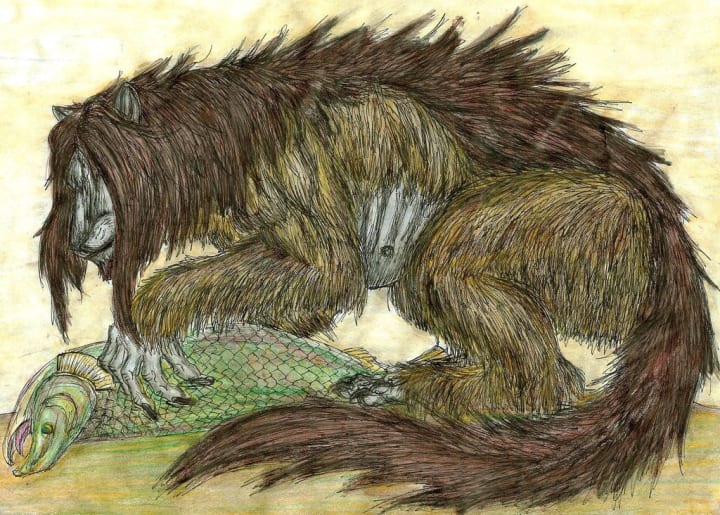
The bunyip is a mythical creature from Australian Aboriginal folklore, said to inhabit swamps, billabongs, creeks, riverbeds, and waterholes. The first known written record of the bunyip comes from the diary of an early settler named George French Angus in 1847, who recorded that he had heard Aboriginal people in the area talk about a creature called the "Bunyip".
According to Aboriginal folklore, the bunyip is a water spirit that is generally considered to be malevolent. The creature is said to be large, with dark fur, a dog-like head, and a loud, booming roar. Some accounts describe the bunyip as having horns, tusks, or fins, and others describe it as having a long neck or tail.
The origins of the bunyip are not entirely clear, but there are several theories. Some researchers suggest that the bunyip may be a cultural memory of prehistoric marsupials, such as the Diprotodon, a giant wombat-like creature that roamed Australia more than 40,000 years ago. Others suggest that the bunyip may be a distorted memory of Aboriginal oral traditions about ancestral spirits.
The myth of the bunyip became more widespread in the late 19th century, as European settlers began to explore the interior of Australia. Many Europeans were fascinated by the idea of a monster that lived in the Australian wilderness, and the legend of the bunyip became a popular subject for writers, artists, and storytellers.
In the early 20th century, there were reports of bunyip sightings in various parts of Australia. Some of these sightings were later explained as misidentifications of known animals, such as seals or large fish. However, others remain unexplained to this day.
Today, the bunyip remains a popular subject in Australian folklore and culture. The creature has appeared in numerous books, movies, and television shows, and is often used as a symbol of Australia's unique and mysterious landscape. While the existence of the bunyip remains unproven, its place in Australian folklore and mythology is secure, and the legend of the bunyip is likely to continue for many years to come.
7., El chupacabre:

El Chupacabra is a legendary creature that is said to inhabit parts of the Americas, particularly in Puerto Rico, Mexico, and the southwestern United States. The creature is typically described as a reptilian-like creature, about the size of a small bear or large dog, with spines or quills running down its back and a row of sharp teeth. It is known for attacking and killing livestock, particularly goats, hence its name.
The first reported sightings of El Chupacabra began in the late 1980s and early 1990s, primarily in Puerto Rico. At the time, many people believed that the creature was responsible for the deaths of large numbers of farm animals on the island. Eyewitness accounts of the creature varied, but most described it as having a lizard-like or kangaroo-like appearance, with sharp claws and teeth.
The legend of El Chupacabra soon spread to other parts of the Americas, and reports of sightings and attacks by the creature began to emerge in Mexico, the United States, and other countries. In many cases, the attacks were blamed on wild dogs or other animals, but some people continued to believe that El Chupacabra was responsible.
Over the years, there have been numerous theories about the origin and nature of El Chupacabra. Some people believe that it is a previously unknown species of animal, while others think that it may be a genetic experiment gone wrong. Still others believe that it is a supernatural or extraterrestrial being.
Despite the many reported sightings and attacks attributed to El Chupacabra, there is little scientific evidence to support the existence of such a creature. Most attacks on livestock can be attributed to known predators, such as coyotes or wild dogs, and eyewitness accounts of the creature have often been inconsistent or unreliable.
Today, the legend of El Chupacabra remains a popular subject in folklore and popular culture, and the creature has been featured in numerous books, movies, and television shows. While the existence of El Chupacabra remains unproven, its place in the folklore and mythology of the Americas is secure, and the legend is likely to continue for many years to come.
8., Unicorn:

he unicorn is a mythical creature that has been part of human folklore and mythology for thousands of years. The creature is typically described as a horse-like animal with a single, spiraling horn projecting from its forehead.
The origins of the unicorn are not entirely clear, but the creature appears in the folklore and mythology of many different cultures throughout history. The earliest known depictions of the unicorn date back to ancient Mesopotamia, where the creature was associated with the goddess Inanna.
In European folklore, the unicorn became associated with purity, innocence, and grace. The creature was said to be able to purify water with its horn, and its blood was believed to have healing properties. In Christian mythology, the unicorn was seen as a symbol of Christ, and was often depicted in religious art.
During the Middle Ages, the unicorn became a popular subject for literature and art, and the creature was often depicted in tapestries, paintings, and illuminated manuscripts. The most famous of these works is the "Lady and the Unicorn" series of tapestries, which were created in the late 15th century.
In the 16th and 17th centuries, the unicorn began to be associated with the concept of the "fabled animal", a creature that was believed to exist but had not been seen by humans. Many explorers and naturalists during this time searched for evidence of the unicorn, but none were able to find any.
Today, the unicorn remains a popular subject in popular culture, and the creature has been featured in numerous books, movies, and television shows. While the existence of the unicorn remains unproven, its place in human mythology and folklore is secure, and the creature is likely to continue to captivate our imaginations for many years to come.
9., Hobbits:

Hobbits are a fictional humanoid race created by British author J.R.R. Tolkien. They first appeared in his novel "The Hobbit," which was published in 1937, and later became central characters in his epic high-fantasy novel "The Lord of the Rings."
Tolkien described hobbits as a small, peaceful, and agrarian people, standing between two and four feet tall. They have furry feet, large round bellies, and enjoy smoking pipes and eating hearty meals. They are known for their love of comfort and simplicity, but are also brave and resourceful when called upon to defend their home, the Shire.
The origins of hobbits are not entirely clear, but Tolkien suggested that they were a sub-group of the larger human race, with their own distinct culture and language. He also hinted at their close relationship with the natural world, and their ability to move unnoticed through the wilderness.
"The Hobbit" and "The Lord of the Rings" became immensely popular after their publication, and hobbits quickly became a beloved and iconic element of Tolkien's Middle-earth universe. The success of the books led to numerous adaptations, including films, television series, and video games, which helped to popularize hobbits even further.
Today, hobbits remain a popular subject in popular culture, and the term "hobbit" is often used to describe small, friendly people who enjoy the comforts of home. The influence of Tolkien's works can be seen in many areas of popular culture, and the hobbits are likely to continue to captivate the imaginations of readers and viewers for many years to come.
10., Werewolf:
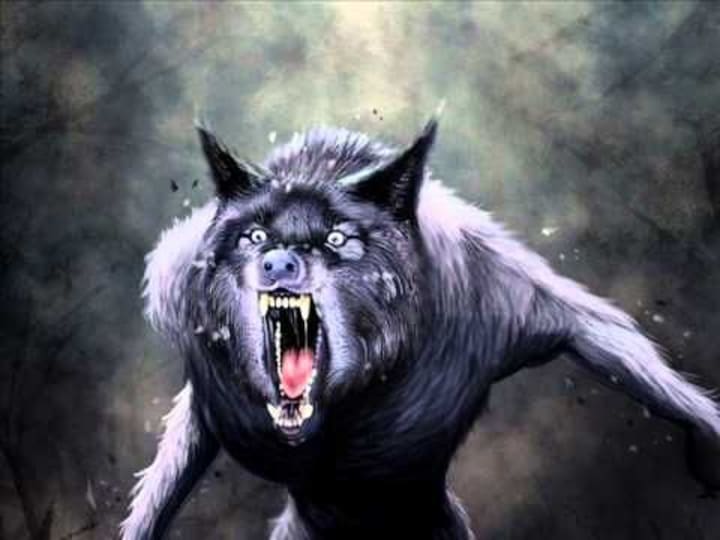
Werewolves are mythical creatures that are half-human and half-wolf. According to legend, werewolves are humans who can transform into wolves or wolf-like creatures, usually during the full moon. They are often portrayed as dangerous and unpredictable, with a thirst for human blood.
The origins of the werewolf legend are unclear, but it is believed to have originated in ancient Greece, where there were stories of humans being transformed into wolves as a punishment from the gods. The legend was later adopted by other cultures, including the Vikings, who believed that they could transform into wolves by wearing wolf skins.
In the Middle Ages, the werewolf legend became associated with witchcraft and demonology, and many people were accused of being werewolves and executed as a result. In the 16th and 17th centuries, the werewolf legend was further popularized by European folklore and literature, including the famous story of "Little Red Riding Hood," which features a werewolf as the villain.
In the modern era, werewolves have become a popular subject in literature, film, and other forms of popular culture. They are often portrayed as tragic figures, struggling with their dual nature and the societal stigma associated with being a monster. Werewolves have also been used as symbols for various issues, including the AIDS epidemic and issues of identity and gender.
While werewolves are not a real animal, the legend has endured for centuries and continues to capture the imaginations of people around the world.






Comments
There are no comments for this story
Be the first to respond and start the conversation.